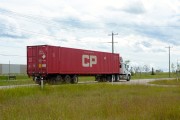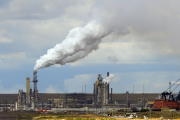The past week has seen considerable debate about the degree to which Hurricane Sandy can be linked to global warming and how that relationship should be described. But debating the causes of the superstorm detracts from a bigger challenge ahead.
We know that global warming is fuelling these types of extreme weather events: warmer oceans and air cause stronger winds, heavier rains and bigger storm surges. We also know that Sandy is a precursor of what’s to come, with the frequency and intensity of extreme weather events increasing. The challenge now is to understand the lessons Sandy has to teach.
Whether we think in terms of the dollars of damage caused or the human costs of the disaster, both numbers represent a massive price to society — a price that is only going to increase as the frequency and intensity of extreme weather events increase. There have been numerous warnings from the world’s most credible sources about the risks we’re taking by changing our climate, and we have had many opportunities to change course. But fixated on promoting oilsands expansion at all costs, our federal government hasn’t been willing to listen.
Our most important long-term strategy to prevent these types of human-induced disasters from overwhelming our ability to adapt is to break our addiction to fossil fuels. Yet we repeatedly hear that the costs are too heavy a burden to bear. That the jobs in the oilsands are too important. That it’s better to take a wait-and-see approach to global warming.
As our front row seat to the devastation has shown, these claims betray both common sense and sensible economics.
Recent exchanges between the government and opposition in the House of Commons illustrate just how far we have to go. The government has repeatedly used fables and fabrication to attack the opposition for reasonable proposals to put a price on carbon pollution.
In one of the more bizarre turns in the ongoing federal carbon tax debate, Conservative Minister John Baird claimed that a modest carbon tax (equal to adding nine cents per litre to the price of gasoline) would “kill and hurt Canadian families.” Perhaps he misspoke, but the reality is that our continued failure to slow global warming is what is going to kill and hurt families — and not just in Canada, but around the globe. The World Health Organization estimates that global warming already causes over 150,000 deaths annually.
That nine cents per litre — less than a dollar a day for the average Canadian family — could actually be the signal that helps flip the tables in favour of clean energy and give government the resources it needs to invest in that transition. Applied to all fossil fuel combustion, the equivalent of nine cents a litre would raise $20 billion a year in government revenues.
When the government cheerfully announced it was withdrawing from the Kyoto protocol last year, it did so under the pretences of helping Canada’s economy. This conclusion ignored the simple fact that no economy does well when it is ravaged by storms, droughts and other extreme weather events. Canada’s true economic interest lies in finding global solutions to global warming — not in turning our back on the rest of the world.
Instead of trumpeting unfettered expansions of oilsands pipelines and mines, we need an economic vision based on a clean energy future for this country. Instead of allowing dirty coal-fired power plants to pollute the atmosphere until the middle of the century, we need to rapidly shift to the cleaner alternatives available today. Instead of squabbling over transit investments, we have to find ways to mobilize the necessary capital that will give people more reasonable, affordable options to leave their cars at home.
The potential silver lining to a disaster like Hurricane Sandy is that it could be the spark that ignites these changes and recent remarks from New York Mayor Michael Bloomberg and President Obama provide a glimmer of hope. That awakening, and the action that needs to follow, will only happen in Canada if we’re willing to connect the dots and demand that our governments do so as well: will we invest $20 billion toward a safer future for our children, or wait for the next $50-billion disaster?






